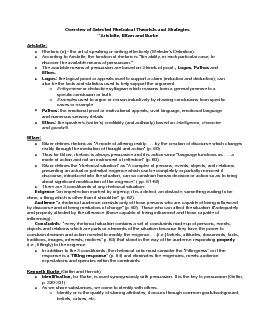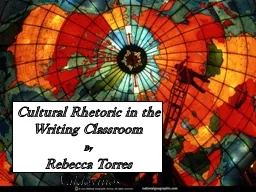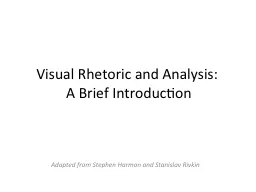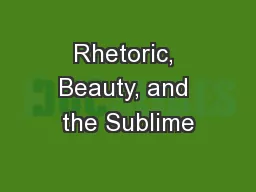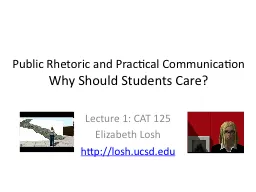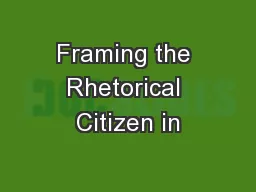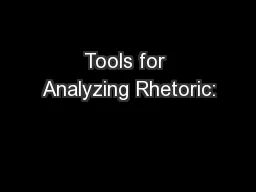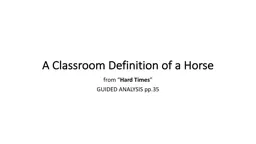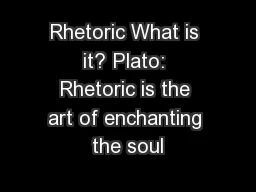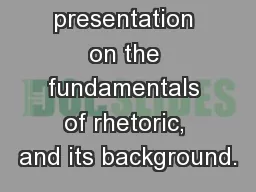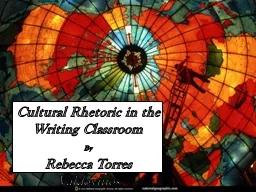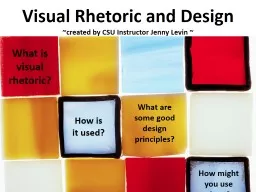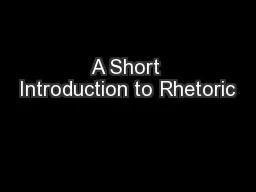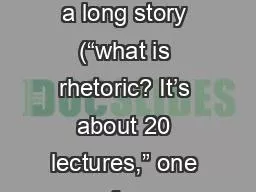PDF-Bitzer defines rhetoric as "A mode of altering reality . . . by the cr
Author : briana-ranney | Published Date : 2017-11-25
Griffin and Herrick Division or lack of identification is the natural state of separate human beings The human experience is inherently individual and thus divisive
Presentation Embed Code
Download Presentation
Download Presentation The PPT/PDF document "Bitzer defines rhetoric as "A mode of al..." is the property of its rightful owner. Permission is granted to download and print the materials on this website for personal, non-commercial use only, and to display it on your personal computer provided you do not modify the materials and that you retain all copyright notices contained in the materials. By downloading content from our website, you accept the terms of this agreement.
Bitzer defines rhetoric as "A mode of altering reality . . . by the cr: Transcript
Download Rules Of Document
"Bitzer defines rhetoric as "A mode of altering reality . . . by the cr"The content belongs to its owner. You may download and print it for personal use, without modification, and keep all copyright notices. By downloading, you agree to these terms.
Related Documents

